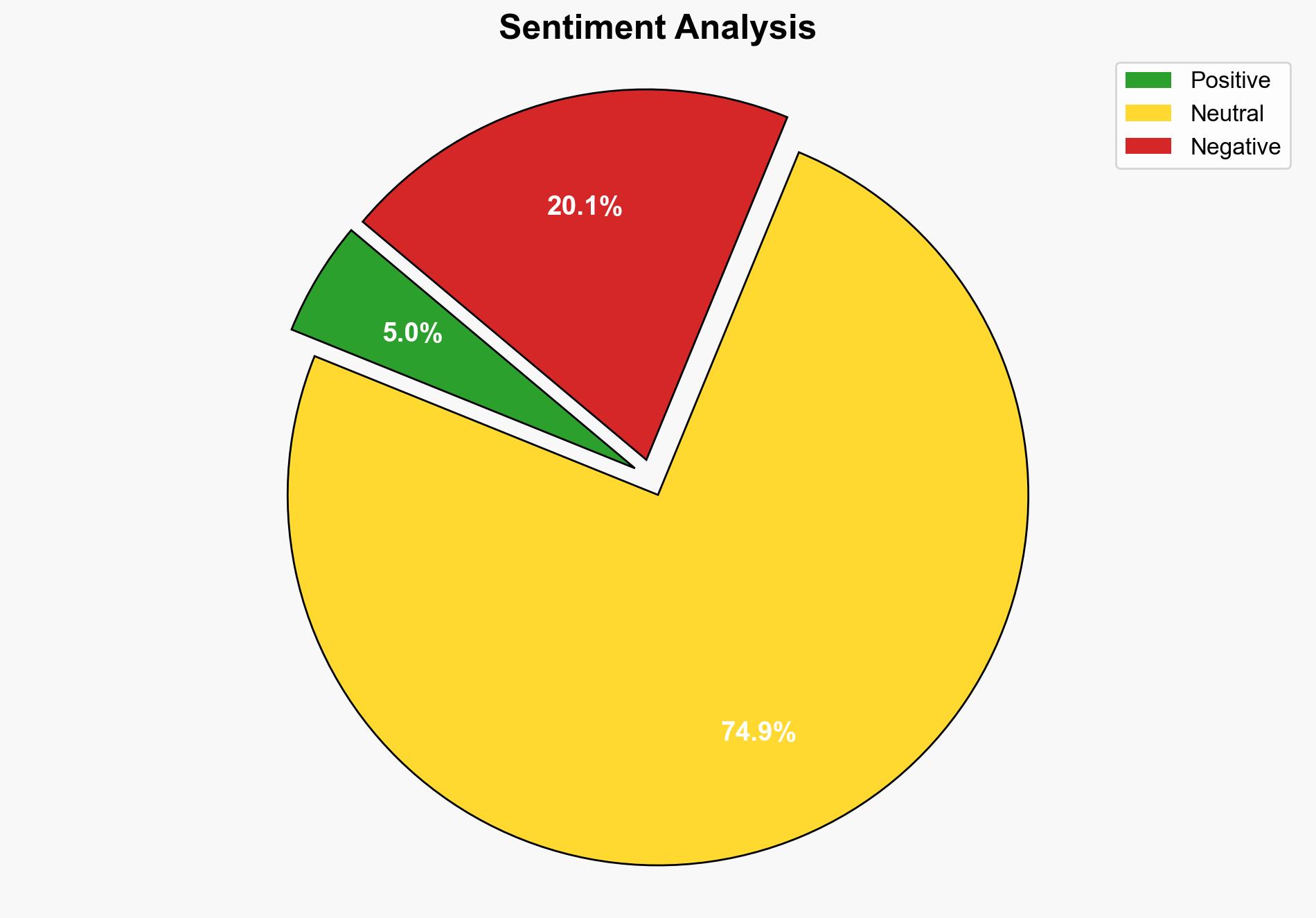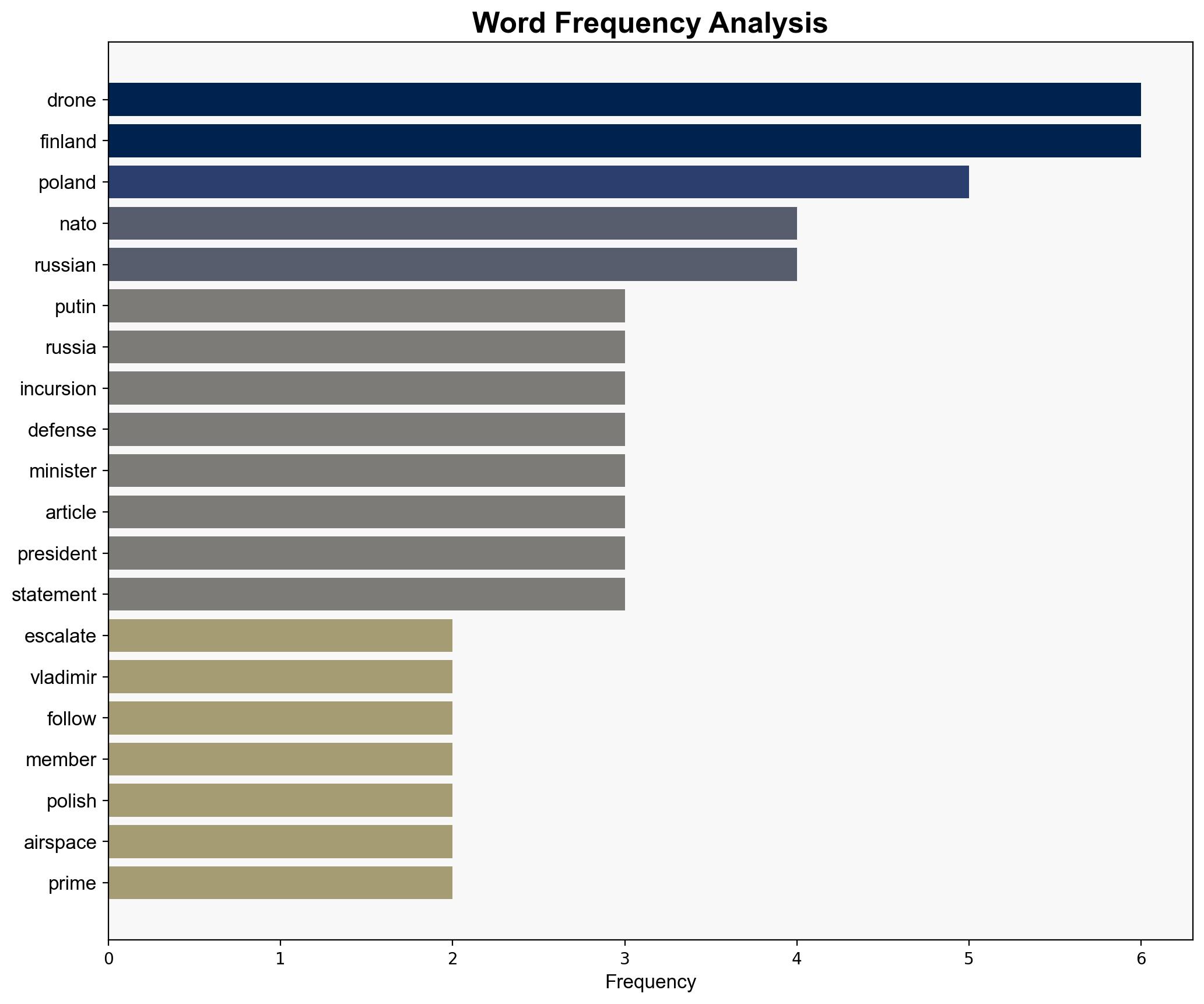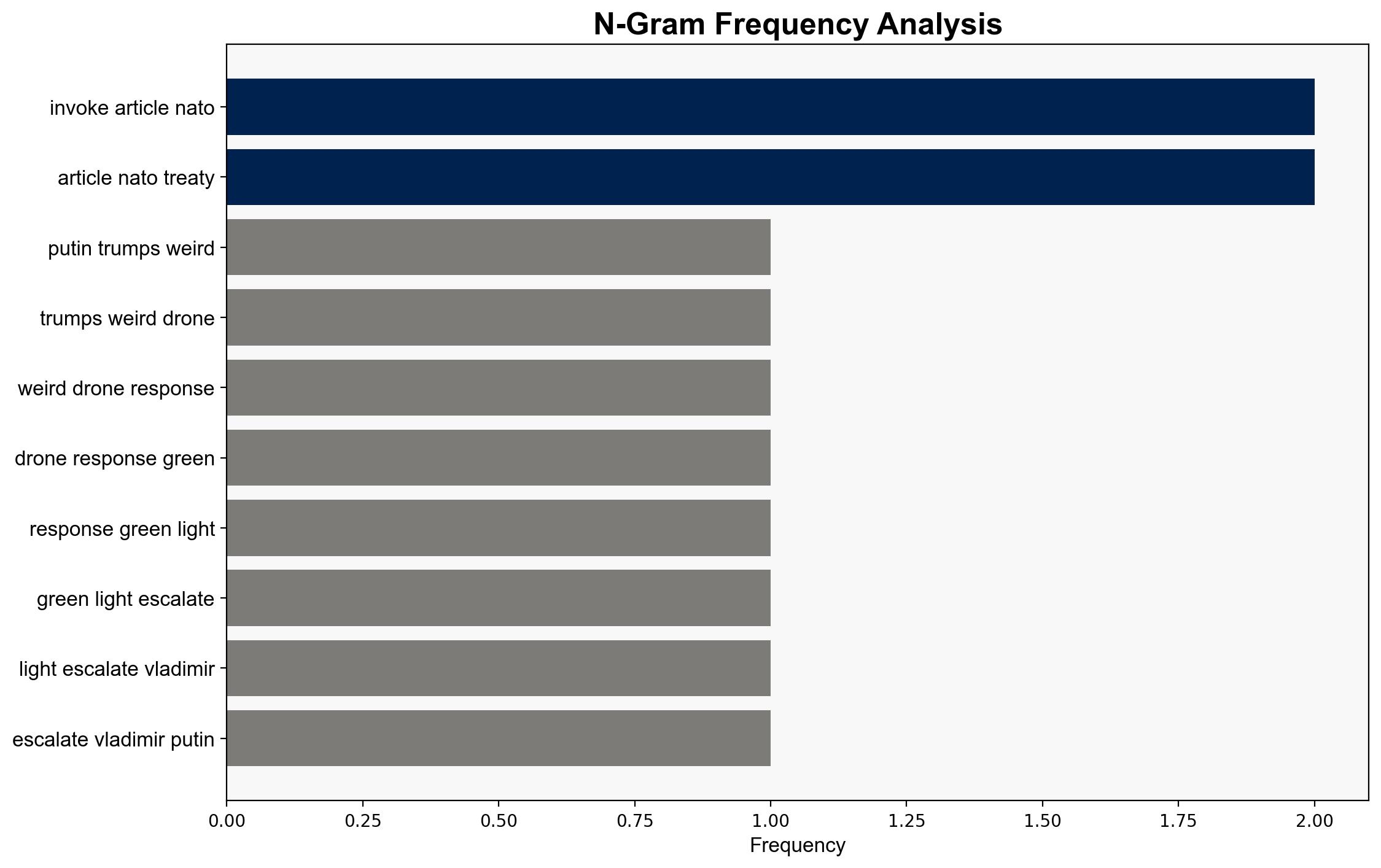Russia Ramps Up NATO Attacks With Threat to Finland – The New Republic
Published on: 2025-09-11
Intelligence Report: Russia Ramps Up NATO Attacks With Threat to Finland – The New Republic
1. BLUF (Bottom Line Up Front)
Russia’s recent threats towards Finland and incursions into Polish airspace suggest a strategic maneuver to test NATO’s cohesion and response capabilities. The most supported hypothesis is that Russia aims to destabilize NATO by exploiting perceived weaknesses and sowing discord within the alliance. Confidence level: Moderate. Recommended action: Strengthen NATO’s unified response and enhance intelligence-sharing mechanisms to counter misinformation and potential escalations.
2. Competing Hypotheses
1. **Hypothesis A**: Russia’s actions are a calculated strategy to probe NATO’s defensive readiness and political unity, using threats and disinformation to create divisions and test responses.
2. **Hypothesis B**: Russia’s threats and incursions are primarily domestic propaganda tools aimed at consolidating internal support by portraying NATO as an aggressor, with less emphasis on actual military confrontation.
Using ACH 2.0, Hypothesis A is better supported due to the coordinated nature of the threats and incursions, which align with historical Russian tactics of testing NATO’s resolve. Hypothesis B lacks sufficient evidence of a purely domestic focus, given the international scale of the actions.
3. Key Assumptions and Red Flags
– **Assumptions**: Both hypotheses assume Russia’s actions are deliberate and strategically planned. Hypothesis A assumes NATO’s perceived weaknesses are a primary target, while Hypothesis B assumes a significant domestic audience for these actions.
– **Red Flags**: The lack of direct military engagement despite aggressive rhetoric suggests potential deception. The reliance on disinformation campaigns indicates an attempt to manipulate perceptions.
– **Blind Spots**: Limited insight into internal Russian decision-making processes and potential overestimation of NATO’s perceived weaknesses.
4. Implications and Strategic Risks
– **Patterns**: Russia’s use of threats and disinformation is consistent with past behavior aimed at destabilizing adversaries.
– **Cascading Threats**: Increased tensions could lead to miscalculations or unintended escalations, particularly if NATO’s response is perceived as weak or divided.
– **Economic and Cyber Dimensions**: Potential for economic sanctions and cyber-attacks as retaliatory measures.
– **Geopolitical and Psychological Dimensions**: Heightened anxiety among NATO members, particularly those bordering Russia, could lead to increased military spending and shifts in regional alliances.
5. Recommendations and Outlook
- Enhance NATO’s rapid response capabilities and conduct joint exercises to demonstrate unity and readiness.
- Increase intelligence-sharing among NATO members to counter disinformation and improve situational awareness.
- Engage in diplomatic efforts to de-escalate tensions while preparing for potential retaliatory measures.
- Scenario Projections:
- Best Case: Diplomatic resolution reduces tensions without further escalation.
- Worst Case: Miscalculations lead to military confrontations involving NATO members.
- Most Likely: Continued low-level provocations and disinformation campaigns without direct military engagement.
6. Key Individuals and Entities
– Vladimir Putin
– Dmitry Medvedev
– Donald Tusk
– Radosław Sikorski
7. Thematic Tags
national security threats, cybersecurity, counter-terrorism, regional focus





